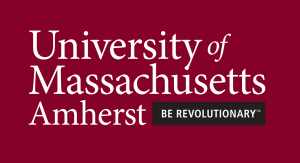How to Use This Book
This book has been specifically designed for this course out of free-and-open resources such as the OpenStax College Physics textbook[1], University of Maryland’s UMD NEXUS Wikibook[2], as well as other resources from around the internet. While the text has all the information you need, some sections are also available as videos on our course YouTube page. These sections will have the link at the beginning with the section below.
Many students often complain that physics lectures, “spend all of their time on the easy problems and never have time to work through harder ones.” In this course, we want to make sure that you have time to work through harder ideas and problems in-class where you can get help from the TAs and instructor. To make sure we have time to explore these concepts, you will need to have some familiarity with basic facts before coming to class. We will expect you to learn the relevant formulas, symbols, and terminology as well as review relevant material from 131 before coming to class using the resources in this book. We will NOT expect you to learn how to solve new types of advanced problems. This style of class, with the expectation of completing readings first is called a flipped classroom and is based on research[3].
This book, like the course, is divided into units. Each unit will begin with a Unit on a Page which summarizes the key points of the unit, both prep and in-class, on a single page. Due to the constraint of fitting on a single page, these pages are necessarily dense. The goal is to help you focus on the underlying themes, see what is really important. I would recommend you print these pages and keep them with you both during your prep and in-class to help you see the big picture.
After the Unit on a Page, you will find a short description of the context that we will be using to explore these physical concepts. We want physics to be relevant to you. Thus, each unit has one (or more!) biological applications that we will use as common themes throughout the unit. To make sure everyone is on the same page, we will explain the needed biology.
After the biology, there will be the physics material that you need to master before coming to class: readings, videos, flashcards to help you remember, and the occasional simulation for you to play with. To help you ensure that you have understood the material, there are homework problems linked from the text that will appear in special colored boxes that look like the box below to help you notice them. These problems are interspersed throughout the text, including on the biology material, to make it easy for you to know where to look for the information for each problem. To make sure you don’t miss any homework problems, we will also make a list of all the problems at the end of the chapter. The homework problems are hosted in the Edfinity homework system. Follow the procedures outlined by your instructor on how to get an account, and check the syllabus for the grading policies.
Homework Problem:
Your homework problems will appear as links in boxes like this one.
They are placed in-line with the text so that you know where to look for the information to solve each problem.
To further ensure that everyone is ready for what will be discussed in class, there will be quizzes on the material as outlined in your syllabus. We WANT you to be prepared for these quizzes; the entire purpose of this book is to prepare you. As such, there will be UMass-Amherst Instructor’s Notes like the one below which will tell you exactly what you need to focus on to be ready for the quizzes.

Instructor’s Notes
Be sure to pay attention to the text in this box! This is the material that will be on your quiz
We encourage your feedback on this book. If you have suggestions for comments or would like to report an error, please go to https://goo.gl/forms/VQaiFUtKD1PxJfH83 and complete the form.
We hope this book is helpful!
Editors:
Brokk Toggerson
Emily Hansen
- https://openstax.org/details/college-physics ↵
- http://umdberg.pbworks.com/w/page/90716129/Working%20content%20I%20(2015) and http://umdberg.pbworks.com/w/page/104048687/Working%20content%20II%20(2016) ↵
- Stoltzfus, Matthew W. “Active Learning in the Flipped Classroom: Lessons Learned and Best Practices To Increase Student Engagement.” In The Flipped Classroom Volume 1: Background and Challenges, 1223:105–22. ACS Symposium Series 1223. American Chemical Society, 2016.https://doi.org/10.1021/bk-2016-1223.ch008. ↵

